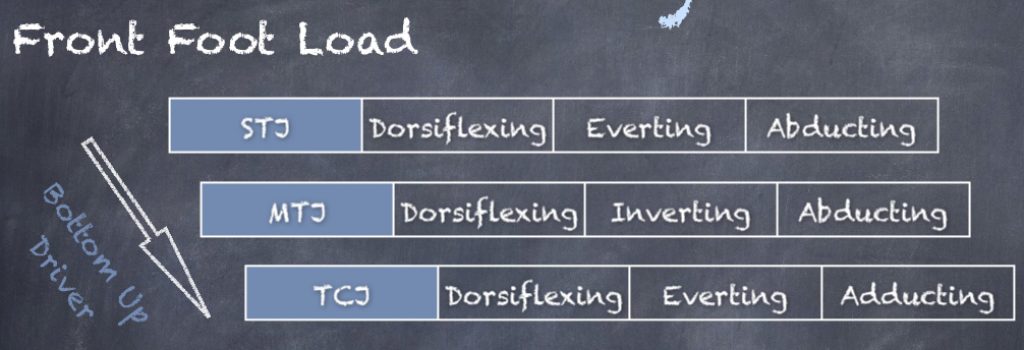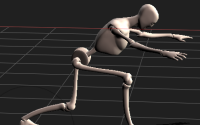Foot Mechanics in Gait
Today is all about the ‘Foot Mechanics in Gait’, but before we go into that; I’m a big believer in some of the changes in thought process brought about by advances in neuroscience and the general trend away from seeing the body as ‘mechanical’. However, I am yet to see a reason not to use biomechanics, a good assessment to understand a patients foot mechanics, thoracic motions, etc. (See Damage vs Sensitivity for more on this).
It’s not that I think that a structural/biomechanical assessment is the only way it should be. It’s more that I see this approach as a way of addressing the body, it’s pain/dysfunction. However you want to frame it. I heard Gray Cook talking the other day about how he loves to help with lots of aspects of someones health, wellbeing, performance, etc; however, people come to him because they have pain! I would guess that is the same for almost all musculoskeletal therapists and is certainly the case with me.
Like I said, my movement background is simply the framework I use to help the patients I see. I can’t tell you whether my help is through mechanical change (do they really have the 2 degrees more sub-talar eversion…and is that the reason they now have no pain squatting compared to a painful pre-treatment squat!) or due to a change in central perception. What I do know is the different things are not separate, they are all linked together and thankfully by treating what I see movement/function wise I am happy in the knowledge that I am having a greater affect than simply movement/function.
What is the Patients Goal?
Obviously, the ultimate test is the outcome for the patient. There is no satisfaction is seeing a patient moving “perfectly” (whatever that may be!) but still in pain!! They don’t necessarily care about what I care about…they want to be out of pain and achieving their goals. That’s why we all have more than one strategy for treating patients…and then it is up to the experience of the clinician to match the skills they have to best help each individual patient.
Having just got going on my MSc. in Clinical Biomechanics I’m hoping to learn a lot more on this, but here is my current understanding on the foot in gait.
Foot Mechanics in Gait
Since working with John Hardy my thought process for foot mechanics in gait has always been split into front foot and back foot motions. Though of course it is a continuous cycle and we have used models that reflect that. However, the greatest understanding, I believe, comes from understanding it this way. What happens as a front foot? How do you assess that? How do you treat that? Then of course the same process for the back foot motions
This will be a quick overview that will serve you well when we do the more detailed posts over the next week or so…we will always talk about the right side to avoid confusion.

Foot Mechanics in Gait: Front Foot Motions
Sub Talar Joint
This will be the first to feel a reaction as this is where the foot hits the floor, on the lateral side of the calcaneus. This will then evert causing pronation of the STJ. The reaction felt at the STJ will primarily be caused by the calcaneus being stopped by the ground and the talus moving on top of it. The talus will slide anteriorly, medially and rotate left (remember it is a right foot). Since the calcaneus is largely still the joint will feel dorsiflexion, eversion and external rotation.
Talo-Crural Joint
We already know what the talus is doing and the tib/fib is so closely related that it will be following along for the ride, just slightly slower. The tibia coming over the top of the foot drives the dorsiflexion, the everting calcaneus drives some eversion and the talus rotating left drives TCJ internal rotation.
Mid-Tarsal Joint
Once the foot is flat on the floor the mid-tarsal joint will start to feel motion driven from the rear foot, primarily the talus. The MTJ dorsiflexion will be driven by the leg coming over the top of the foot and the anterior glide/tilt of the talus. The left rotation of the talus drives abduction of the MTJ and the eversion of the rear foot drives inversion of the MTJ.

Foot Mechanics in Gait: Back Foot Motions
Talo-Crural Joint
As a back foot the driver of the motion will be driven down the leg from the mass and momentum of the opposite leg swinging through. We are still talking about the right leg, the tibia is rotating right and being lifted off the floor. This pulls the TCJ into plantar flexion, while the right rotation drives the TCJ into inversion and internal rotation as the foot as a whole supinates.
Sub Talar Joint
This will be next down the chain to feel the force. It will mirror the motions of the TCJ as the forces acting are the same and in the same direction. This means you get plantar flexion, inversion and internal rotation.
Mid-Tarsal Joint
By this point in the gait cycle I’m seeing the heel off the floor, the rear foot is nearing full supination and the forefoot is still relatively fixed to the floor. The MTJ joint will be driven by the rear foot to plantar flexion, adduction and eversion.

Summary
I had to shorten things up a little towards the end as I am close to 1000 words!!! sorry! However, this gives us a perfect platform to build the next few posts where we will explore different aspects of foot function, assessment and treatment.
Next Post: Sub Talar Joint Function
Physioblogger


